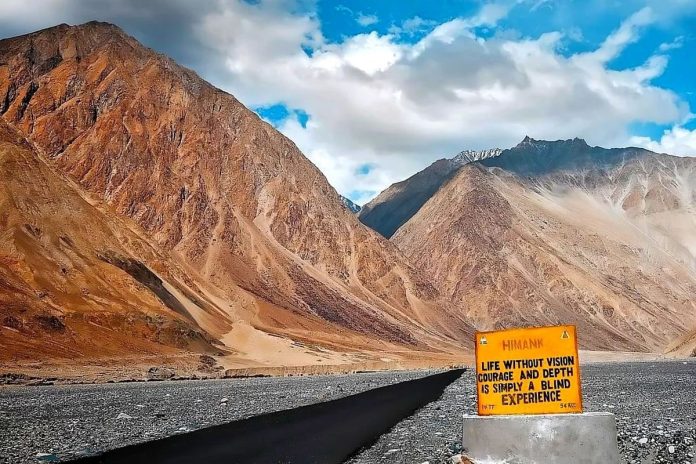This new road to Daulat Beg Oldi is set to support critical military operations by the end of November, with plans to fully pave it within a year.
India is making significant strides in reshaping the strategic landscape of Ladakh, a region where tensions with China have persisted due to border disputes and military ambitions.
Indian officials have disclosed that a major project is nearing completion to establish crucial alternative connectivity to the remote and strategically vital outpost near the contested Line of Actual Control (LAC).
The new road leading to Daulat Beg Oldi (DBO), which is India’s northernmost military base, will facilitate the movement of soldiers, equipment, and supplies to strengthen the front lines.
This road has the distinct advantage of being hidden from view across the LAC, unlike the only existing road to DBO from Darbuk. Additionally, its location farther from the LAC reduces its vulnerability to potential attacks from across the border.
This new road is set to support critical military operations by the end of November, with plans to fully pave it within a year.
Approximately 2,000 individuals are working diligently to meet this deadline. The road construction spans 130 kilometres from Sasoma in the Nubra Valley to DBO near the Karakoram Pass, reports Hindustan Times.
The most challenging phase of the construction has now begun, which includes navigating steep glaciated terrain and constructing a bridge over the Shyok River.
The Border Roads Organisation (BRO) is employing state-of-the-art technologies to overcome these final construction hurdles.
This project gained momentum three years ago amid escalating military tensions between India and China. The two countries have been locked in a standoff since May 2020, and a comprehensive resolution of the border crisis remains elusive.
Depsang, located within the DBO sector, continues to be a problematic area in the border dispute.
Key sections of the Sasoma-Saser La-Saser Brangsa-Gapshan-DBO road have already been completed. For instance, out of the 52-km stretch between Sasoma and the 17,600-foot Saser La, 46 km have been paved, with the remaining 6 km being the most challenging due to glaciated terrain.
Innovative techniques, such as geocells made of polymer, are being employed to stabilise and enhance the road’s durability.
Connectivity between Saser La and Saser Brangsa has been established, and blacktopping for the 27-km stretch is on track to be completed by October 2024.
Meanwhile, the 42-km Saser Brangsa-Gapshan section is in active construction, with 31 km already built and the entire stretch expected to be paved within a year. The 10-km stretch between Gapshan and DBO will also be ready by the next year.
This new road will introduce an additional axis, branching out from Saser Brangsa to Murgo on the DS-DBO road, with an 18-km stretch projected to be fully operational by the middle of the following year.
This section poses a unique challenge, necessitating the construction of a 345-metre bridge over the Shyok River with seven piers, for which micropiles are being utilised.
Former Northern Army commander Lieutenant General DS Hooda (retired) emphasises the strategic importance of the “Sub Sector North,” encompassing the Karakoram Pass, Depsang plains, and the DBO landing ground. The new road offers a safer alternative to the DS-DBO road that runs close to the LAC, reducing the risk of being cut off during operations.
To ensure all-weather connectivity, BRO is planning a 7-km tunnel under Saser La, with construction set to commence in 2025 and potential completion by 2028.
India has been rapidly advancing its border infrastructure in response to China’s developments in border areas, especially since the Galwan Valley skirmish in June 2020. This infrastructure improvement is a strategic move to enhance military readiness in challenging terrains.
BRO has successfully completed nearly 300 critical projects in the last three years, amounting to Rs 8,000 crore in investment. The organisation continues to work on key projects in the Ladakh sector, even as diplomatic talks between India and China are ongoing to resolve border issues.
While there has been disengagement in some areas, significant troop deployments and advanced weaponry persist in the Ladakh theatre. Challenges at Depsang and Demchok remain on the negotiation table, highlighting the continued importance of infrastructure development in the region.


